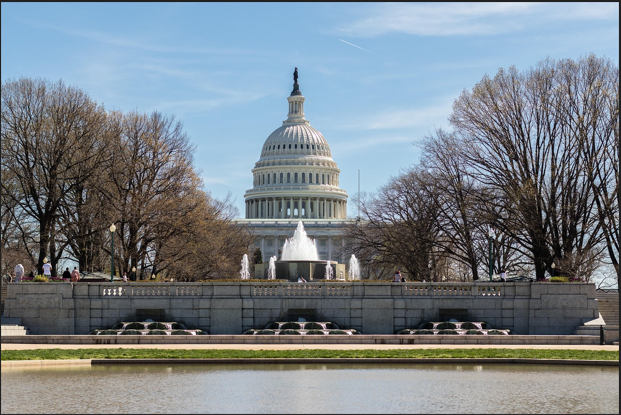The crypto sector has crossed a historic milestone. After months of negotiation, **both chambers of Congress have now approved the bipartisan **Guiding and Establishing National Innovation for U.S. Stablecoins (GENIUS) Act, sending the first comprehensive federal stablecoin bill to the White House for signature. The legislation passed in the House in April and in the Senate on June 17, 2025 creates a national rule‑book for dollar‑pegged tokens and could unlock a trillion‑dollar payments market within the decade.reuters.comfenwick.com
1 │ Why the GENIUS Act Matters
| Key Feature | New Requirement | Practical Impact |
|---|---|---|
| 1:1 Reserve Backing | Only cash, Fed balances, or short‑term U.S. Treasurys may back payment‑stablecoins. | Ends “algorithmic” and under‑collateralized models blamed for prior crashes. |
| Federal Licensing | Issuers must obtain a bank charter or a special OCC/State license with Fed supervision. | Opens the door for large banks and well‑regulated fintechs while excluding lightly supervised offshore players. |
| Real‑Time Disclosures | Monthly reserve attestations plus annual GAAP audits for issuers > $50 billion market cap. | Institutional investors get on‑chain, near‑real‑time transparency. |
| Bankruptcy Protections | Stablecoin holders rank senior to other creditors if an issuer fails. | Reduces systemic‑risk concerns for investors and regulators alike. |
The table above distills the most investor‑relevant provisions of the 187‑page bill. In short, the act merges core elements of traditional bank regulation capital, liquidity, auditing with the programmability of crypto, giving the asset class a clear, legally defensible foundation.
2 │ How Today’s Top Stablecoins Stack Up
| Rank | Token | Issuer | Market Cap (≈) | Reserve Model | GENIUS‑Act Ready? |
|---|---|---|---|---|---|
| 1 | USDT | Tether Ltd. | $155.7 B | Cash & Treasurys | Likely (already 1:1 but faces U.S. licensing hurdle) |
| 2 | USDC | Circle Internet | $61.4 B | Cash & Treasurys | Yes (Circle has bank‑partner structure and full attestations) |
| 3 | DAI | MakerDAO | $5.4 B | Over‑collateralized crypto & Treasurys | Partial (needs OCC waiver or restructure) |
| 4 | USD1 | World Liberty Financial | $2.2 B | Treasurys & cash | Yes (backed by former President Trump’s venture) |
| 5 | PYUSD | PayPal | $0.95 B | Cash & Treasurys via Paxos | Yes (Paxos already NYDFS‑regulated) |
Source: CoinMarketCap snapshot, 19 June 2025coinmarketcap.com
3 │ Five Takeaways for Markets and Investors
- Regulatory Clarity Ends the “Wild West.” The law transfers primary oversight to the Federal Reserve and the OCC, ending the state‑by‑state patchwork that let riskier products flourish. Analysts expect the move to slash compliance premiums and narrow bid‑ask spreads for U.S.‑approved tokens.ledgerinsights.com
- Wall Street & Big Tech Will Join In. JPMorgan’s Onyx unit, PayPal, Meta, and Walmart have already piloted stablecoin payments; with a license path in place, full‑scale launches could follow within 12 months.reuters.com
- Treasury Demand Could Surge. Each new dollar‑backed token must be collateralized with high‑quality liquid assets—primarily short‑dated Treasurys. Bank of America models suggest every $1 shifted into stablecoins could add $0.90 of Treasury demand, potentially steepening the yield curve over time.businessinsider.com
- Compliance Costs Rise—But So Does Legitimacy. Smaller issuers face heavier KYC/AML and audit expenses; yet the tradeoff is mainstream credibility, smoother exchange listings, and better liquidity.
- Global Ripple Effects. The EU’s MiCA regime already covers euro‑stablecoins; China is piloting retail CBDCs; and now the U.S. has signalled it will not cede dollar dominance in digital payments. Expect other G‑20 nations to accelerate copy‑cat rules in 2025–26.
4 │ Who Wins, Who Loses
| Likely Beneficiaries | Possible Casualties |
|---|---|
| • U.S. banks with existing Fed access and compliance teams. | • Algorithmic or under‑collateralized projects (e.g., FRAX, AMPL) that fall outside the “payment‑stablecoin” definition. |
| • Fintechs like Circle, PayPal, Stripe (via partnerships). | • Offshore issuers unwilling to submit to Fed oversight or periodic audits. |
| • U.S. Treasury, which gains a new, steady buyer base for short‑term bills. | • Decentralized, DAO‑governed stablecoins lacking legal entity structures. |
5 │ Next Steps on the Road to Law
- Presidential Signature. The White House has signalled support and could sign the bill before the August recess.
- Rulemaking Dash. The Fed and OCC have 270 days to publish implementing rules covering licensing, disclosure templates, and sanctions screening standards.
- Phase‑In Period. Existing issuers get a one‑year grace period to apply for licenses; new entrants must comply from day one.
- Secondary Legislation. Lawmakers are already drafting a companion “Market Structure Act” for crypto‑exchanges expect hearings this fall.
External Resource
For the full legislative text and latest updates, see the Reuters breakdown of the Senate vote (https://www.reuters.com/sustainability/boards-policy-regulation/us-senate-passes-stablecoin-bill-milestone-crypto-industry-2025-06-17/) a concise primer on the bill’s journey and industry reaction.reuters.com
Bottom Line
With the GENIUS Act heading to the Oval Office, stablecoins have effectively graduated from a start‑up experiment to a regulated pillar of U.S. payments infrastructure. For investors, the risk‑adjusted appeal of dollar‑pegged tokens just rose sharply; for issuers, the bar is higher but the addressable market is vastly larger. Either way, the stablecoin era of “move fast and break things” is giving way to “move fast—with a bank charter.”


